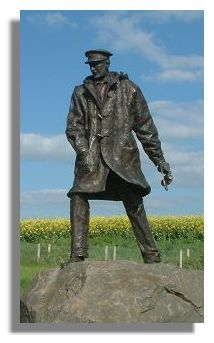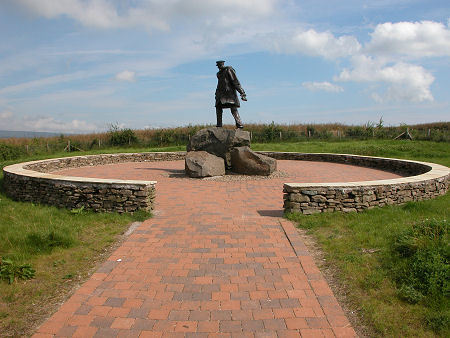-

Sir David Stirling/SAS near Doune. Date of photo estimated - Taken by Rampant Scotland website 01 Sep 2014
-

Sir David Stirling/SAS near Doune. Date of photo estimated - Taken by Undiscovered Scotland website 02 Sep 2014
-
_547x410.jpg?v=66216976eb651)
Sir Colonel David Stirlign Memorial - Taken by Raymond Dormer 16 Sep 2016
-
 2018_0419 War Memorial Online by Raymond Dormer_547x410.jpg?v=66216976eb651)
Colonel Sir David Stirling Memorial - Taken by Raymond Dormer 19 Apr 2018
Reference WMO/190582
War Memorials Trust case: War Memorials Trust needs to avoid Contributors changing location/description details as we help to protect and conserve this war memorial through our casework. You can still add photographs, update condition and use the tabs below. If you believe any of the information you cannot edit is wrong or information is missing, please make a note of the reference number and include it in your email when you contact us.
- Metal Bronze
- Second World War (1939-1945)
Grants to support the repair and conservation of war memorials are available from the charity War Memorials Trust if it has raised funds. Support is focused on war memorials in Very bad or Poor condition or where there is a serious Concern.
Before applying for a grant you should read the advice available on War Memorials Trust`s website. The What we can and cannot fund helpsheet explains what types of work the charity can fund.
If you believe your project is eligible for a grant you should complete the Pre-application enquiry form. You will need to be registered and logged in to complete this.
The Pre-application enquiry form is a series of questions to see if your project is eligible. If it is, you will need to provide further details and submit current colour photographs of the war memorial in either a png, gif, jpg or jpeg format.
You can save your Pre-application enquiry form as you go along. Once submitted War Memorials Trust will respond.
Please be aware that a summary of your enquiry, without your contact details, will appear on this page once submitted. This ensures others are aware that an enquiry has been made and can read the response to avoid duplicate enquiries. Information provided by you to us will be used for the purpose of managing the grant enquiry, for further details please read our Terms and Conditions and Privacy Policy .
As a charity, War Memorials Trust relies on voluntary donations and every contribution, no matter how large or small, makes a really big difference to our work. Your donation will help protect and conserve war memorials for future generations so please support War Memorials Trust’s work.
Information Required
Information Required
Information Required
Information Required
Information Required
Information Required
Information Required



_80x80.jpg?v=66216976eb651)
 2018_0419 War Memorial Online by Raymond Dormer_80x80.jpg?v=66216976eb651)